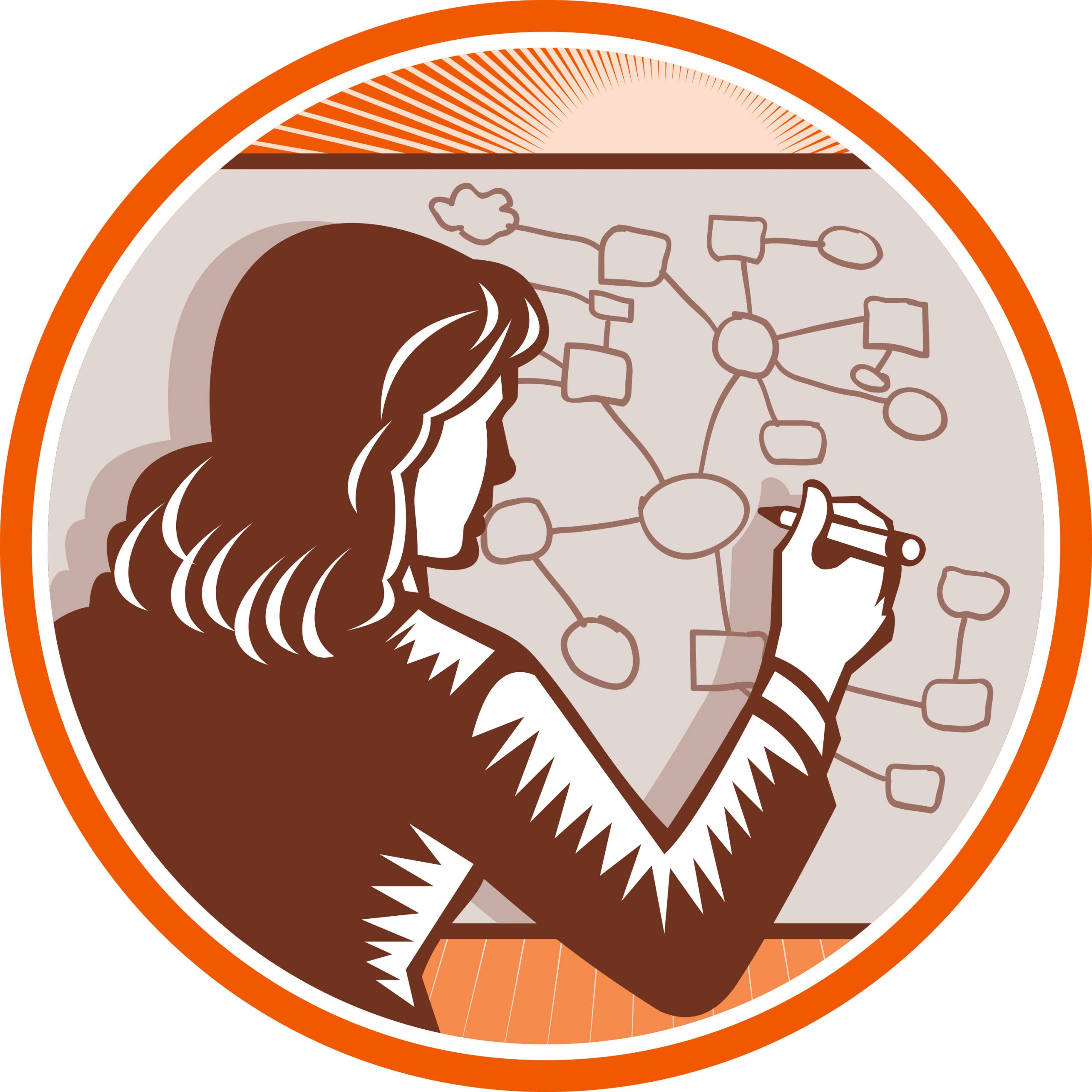
Hand written mindmaps are a powerful and fast way to take notes, brainstorm, get ideas out of your head or enhance creativity.
Unlike computer programs, they offer virtually unlimited room for adjustment. You can draw any kind of line you want, any kind of picture and put your text anywhere.
Drawing a mindmap by hand is a lot faster than doing a mindmap on a computer. If you’re in a classroom or an impromptu meeting, all you need is a pen and a sheet of paper and you can be taking notes mindmap-style.
How do you create a handwritten mindmap?
Start with the Central Concept

Put the most important concept in the middle. This helps you sort out your mindmaps later and also helps your brain categorize and remember the mindmap.
If you’re taking notes on an advertising class, you’d put “Advertising” in the middle.
Branch Off a Main Concept

Then, let’s say the teacher starts talking about a specific topic within advertising. For example, designing a strong brand.
Draw a line, any kind of line, from the main topic to create a new topic. In this case, the new topic is “brand.”
From the branch topic, keep on branching out sub-ideas. Use different kinds of fonts and lines to make it more memorable for you.
Continue Until Finished, Then Start a New Idea

Keep taking notes in this manner until the branch idea is finished. Then start the next branch.
Add Images and Creative Lettering
Your brain tends to remember plain text rather poorly when compared to images or unique lettering.
Add images next to concepts you want to remember. The more unique the image, the more likely you are to remember it weeks, months or even years down the line.
In our example, let’s say the advertising teacher tells the class they can get a 15% discount on any TV ad they buy through what’s called the “agency discount.”
If you want to be sure to remember this concept, make the 15%’s lettering unique and draw a picture of some sort next to it.

Text First, Then Images
At times you’ll have ideas flowing so fast that there just isn’t time for pictures or creative lines and letters. In that case, just jot down your ideas in branches as quickly as possible.
Again, in our advertising example, say the teacher starts talking about online advertising and goes through so many concepts so fast that you can’t afford to slow down.
In that case, just get the main ideas down in text form first.

Then come back in and add the images later. (Upper right.)

Condense Similar Thoughts and Topics
If you have several topics that are very similar, consider either grouping them under one branch or linking the branch through arrows.
In this case, if the teacher is talking about magazines and newspapers together, just create one branch for both instead of a branch for each.

Choose Where Your Eyes Will Go
If there are particularly important concepts to remember, make sure to draw your mind map in such a way that your eyes will automatically be drawn there next time.
For example, if the teacher is talking about the importance of testing in advertising, you might write “TEST” in block letters right above the branch to make sure you see those notes first when you pick up the mindmap.

Recap of the Main Points
To recap:
- Start with the main idea in the middle. This helps you organize your mind maps and helps your brain sort different ideas.
- Use images to draw attention to different areas of the mindmap. This also helps your brain remember and process concepts.
- Add emphasis through size and texture to the most important concepts.
- Use different lines and images throughout the mindmap. Again, this helps your mind process concepts.
- If you need to take notes or write quickly, leave out the images first then come back and add it in later.
Here’s an example of a completed hand-drawn mindmap.

Now go and make your own!
